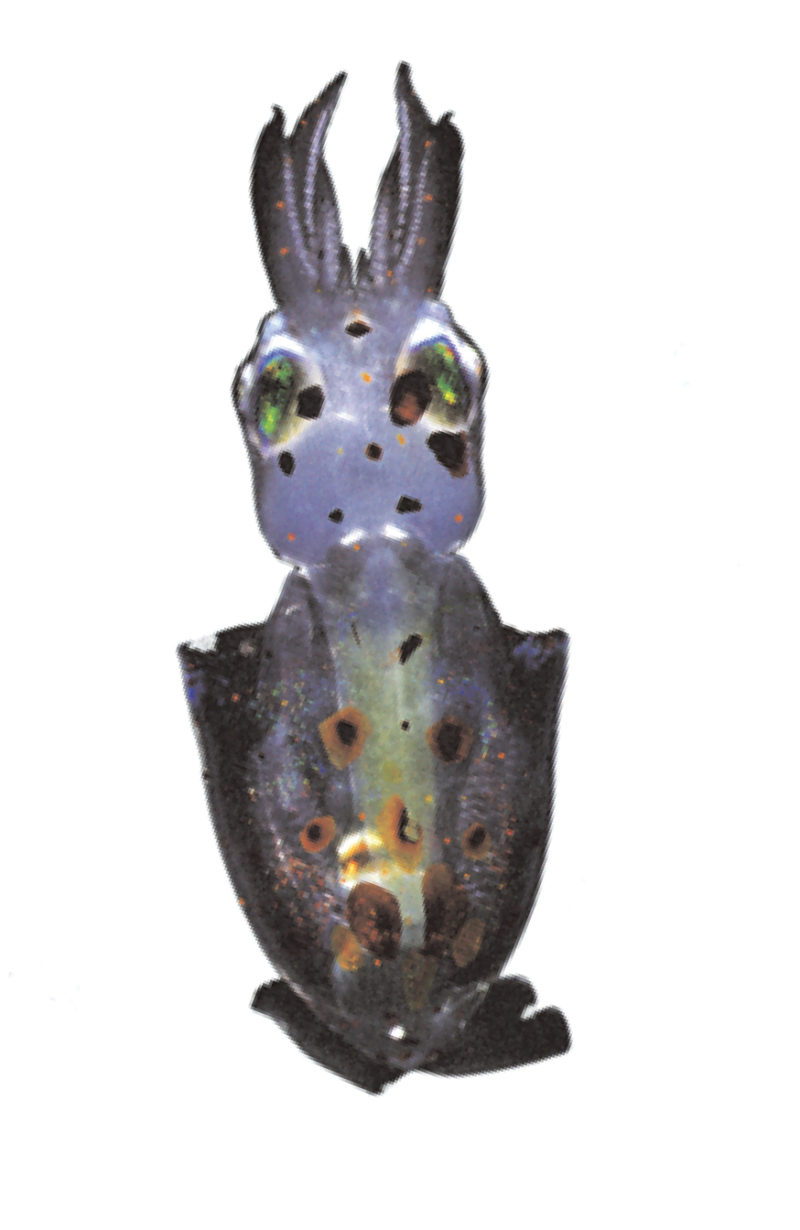If you want to see something truly beautiful, make a shrimp vomit. When threatened, your basic Acanthephyra purpurea spews forth a shining cloud, enveloping the aggressor in a blinding suffusion of light. It is the very opposite of octopus ink, yet it performs the same function: obscurity, followed by escape. This strategic reservoir of bioluminescence is present in about a third of all the shrimp in the world, including those in your freezer. In fact, much seafood, under the right conditions, glows in the dark; we just don’t notice, because it is rarely our habit to eat seafood in the dark. Each year the U.S. Food and Drug Administration fields several panicky calls from those whose low-light circumstances—candlelit dinners, midnight snacks, broken refrigerators—have revealed their meal’s subtle, ominous radiance. Imitation crab meat (which emits a greenish glow) is most often cited.
It’s puzzling why such discoveries are disturbing rather than exciting. We should feel honored to join the food chain of luminous beings, which are rare above the waterline (earthworms, fireflies, angels) but ubiquitous below. A single cubic foot of seawater will usually yield several thousand single-cell dinoflagellates, each, when excited, a living minuscule ember. Hundreds of species of fish and squid wear light in spangled bands like jewelry, subdividing their silhouette into a safer, less recognizable patchwork of shapes. Jellyfish, too insubstantial for a silhouette, use permeated light as a substitute for opacity. The stubbed, fleshy beacon of the anglerfish entices not prey, as was once thought, but a mate.
Its chemistry is no longer mysterious, but still we struggle to comprehend bioluminescence. Our civilization, if not our consciousness, has taken shape around a very different kind of light: a source of warmth, an implement for dispelling the darkness. Here we are confronted with a cognitive disconnect on both counts: an illumination 1) strangely heatless and 2) just barely bright enough to announce itself. We cannot resist one of two reactions, parsing it as decorative—look at the pretty lights!—or trying to shape it to our notions of utility. The 1887 book Living Lights records the response of one Monsieur de Tessan, surrounded by an enormous glowing tide in the South Seas (“I… attempted to write by the light, but the flashes were of too short duration.”). In 1998, an ice storm in Maine cut the power to a cannery with thousands of herring still on the conveyor belts. Five ripening nights later, the plant’s manager sat in the midst of the stillness and read a newspaper lit solely by the brilliance of their decay, no doubt trying very hard to breathe through his mouth.
Such actions are wrong—wrong as a squirrel taxidermied into...
You have reached your article limit
Sign up for a digital subscription and continue reading all new issues, plus our entire archives, for just $1.50/month.
Already a subscriber? Sign in





